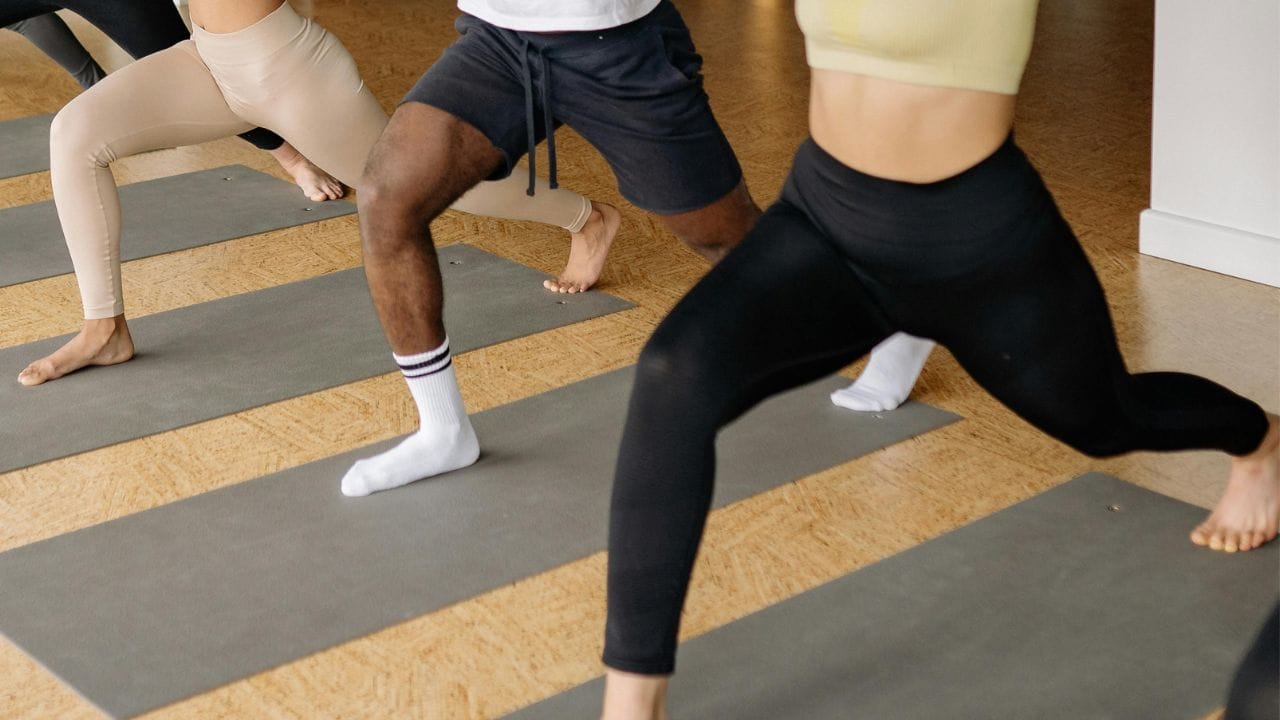Pilates Socks: To Wear or Not to Wear?
These specialized socks provide superior grip, enhancing stability and reducing the risk of slips and injuries.

Key Takeaways:
- Pilates socks provide better grip and hygiene.
- Barefoot exercise offers natural movement and sensory feedback.
- Choosing between Pilates socks and barefoot depends on personal preference and specific needs.
Introduction to Pilates Socks
Pilates has become a popular exercise routine, known for its focus on core strength, flexibility, and overall body awareness. As with any exercise, the right gear can make a significant difference. One of the most debated topics among Pilates enthusiasts is whether to wear Pilates socks or go barefoot during workouts.
Pilates socks are specially designed with non-slip grips on the soles, providing better traction and stability. They come in various styles, from full-toe to open-toe designs, catering to different preferences. But is it better to wear these socks, or should you stick to exercising with bare feet?
The Benefits of Wearing Pilates Socks
Pilates socks offer several advantages that can enhance your workout experience. Firstly, the non-slip grips on the soles provide excellent traction, reducing the risk of slipping and falling. This is particularly beneficial when performing exercises on a smooth surface or using equipment like the Reformer.
Secondly, Pilates socks can improve hygiene. Gyms and studios can be breeding grounds for bacteria and fungi, and wearing socks can protect your feet from potential infections. Additionally, they can keep your feet warm, which is especially useful in colder environments.
Enhanced Grip and Stability
One of the primary benefits of Pilates socks is the enhanced grip they provide. The non-slip grips on the soles ensure that your feet stay firmly planted on the mat or equipment, allowing you to perform exercises with greater confidence and precision.
This added stability can be particularly beneficial for beginners who may struggle with balance and coordination. By wearing Pilates socks, you can focus on perfecting your form without worrying about slipping or losing your footing.
Improved Hygiene and Foot Protection
Gyms and studios can be hotspots for germs, and going barefoot increases the risk of infections like athlete's foot. Pilates socks act as a barrier, protecting your feet from direct contact with potentially dirty surfaces.
Moreover, Pilates socks can prevent blisters and calluses that may develop from friction between your feet and the mat. This added layer of protection can make your workout more comfortable and enjoyable.
The Case for Barefoot Exercise
While Pilates socks offer numerous benefits, some practitioners prefer to exercise barefoot. One of the main reasons is the natural movement and sensory feedback that barefoot exercise provides. When you're barefoot, you can feel the ground beneath you, which can enhance your balance and proprioception.
Additionally, exercising barefoot allows your feet to move more freely and naturally. This can help strengthen the muscles in your feet and improve overall foot health. For some, the freedom and connection to the ground that barefoot exercise offers are unmatched.
Natural Movement and Sensory Feedback
Exercising barefoot allows for a more natural range of motion in your feet and ankles. This can help improve your balance and coordination, as well as strengthen the muscles in your feet.
The sensory feedback you get from being barefoot can also enhance your proprioception, or your body's ability to sense its position in space. This can lead to better body awareness and control during your Pilates practice.
Strengthening Foot Muscles
When you exercise barefoot, your feet have to work harder to maintain stability and balance. This can help strengthen the muscles in your feet and improve overall foot health.
Stronger foot muscles can lead to better performance in your Pilates practice, as well as reduce the risk of injuries. For some, the benefits of barefoot exercise outweigh the advantages of wearing Pilates socks.
Personal Preference and Specific Needs
Ultimately, the decision to wear Pilates socks or exercise barefoot comes down to personal preference and specific needs. Some people may find that the added grip and protection of Pilates socks enhance their workout, while others may prefer the natural movement and sensory feedback of barefoot exercise.
Consider your own needs and preferences when deciding whether to wear Pilates socks or go barefoot. You may even find that a combination of both works best for you, depending on the type of exercises you're doing and the environment you're in.
Assessing Your Environment
The environment in which you practice Pilates can play a significant role in your decision. If you're working out in a studio with smooth, slippery floors, Pilates socks can provide the necessary grip to prevent accidents.
On the other hand, if you're practicing at home on a carpeted surface, you might find that barefoot exercise offers sufficient traction and comfort. Assess your environment and choose the option that best suits your needs.
Listening to Your Body
Your body can also give you clues about whether to wear Pilates socks or go barefoot. If you find that your feet are slipping during exercises, or if you're experiencing discomfort or blisters, Pilates socks might be the better choice.
Conversely, if you feel restricted or uncomfortable in socks, or if you prefer the sensation of being barefoot, then barefoot exercise might be more suitable for you. Listen to your body and make adjustments as needed.
Combining Both Approaches
There's no rule that says you have to choose one option exclusively. Many practitioners find that a combination of both approaches works best for them. For example, you might wear Pilates socks during certain exercises that require more grip and stability, and go barefoot for others that benefit from natural movement and sensory feedback.
Experiment with both options and find the combination that enhances your Pilates practice the most. The key is to find what works best for you and your unique needs.
Practical Examples and Case Studies
To illustrate the benefits of both approaches, let's look at some practical examples and case studies. Jane, a beginner Pilates enthusiast, found that wearing Pilates socks helped her feel more secure and confident during her workouts. The added grip allowed her to focus on her form and technique without worrying about slipping.
On the other hand, Mark, an experienced practitioner, preferred to exercise barefoot. He found that the natural movement and sensory feedback improved his balance and coordination, leading to better performance and fewer injuries.
Jane's Experience with Pilates Socks
Jane started her Pilates journey as a complete beginner. She initially struggled with balance and coordination, often slipping on the smooth studio floors. After trying Pilates socks, she noticed a significant improvement in her stability and confidence.
The non-slip grips on the soles of the socks provided the traction she needed to perform exercises with precision. Jane found that Pilates socks allowed her to focus on her form and technique, ultimately enhancing her overall practice.
Mark's Preference for Barefoot Exercise
Mark, on the other hand, had been practicing Pilates for several years. He preferred to exercise barefoot, as it allowed for a more natural range of motion and sensory feedback. Mark found that barefoot exercise improved his balance and proprioception, leading to better performance and fewer injuries.
For Mark, the freedom and connection to the ground that barefoot exercise offered were unmatched. He felt that his foot muscles were stronger and more resilient as a result of his barefoot practice.
Conclusion: Finding What Works for You
In the end, the choice between Pilates socks and barefoot exercise is a personal one. Both options offer unique benefits, and the best choice depends on your individual needs and preferences. Consider factors such as grip, hygiene, natural movement, and sensory feedback when making your decision.
Experiment with both approaches and listen to your body to find what works best for you. Whether you choose to wear Pilates socks, exercise barefoot, or combine both methods, the most important thing is to enjoy your Pilates practice and stay safe.
Summary
Choosing between Pilates socks and barefoot exercise depends on personal preference and specific needs. Pilates socks offer enhanced grip and hygiene, while barefoot exercise provides natural movement and sensory feedback. Assess your environment, listen to your body, and experiment with both options to find what works best for you.
If you're ready to incorporate Pilates socks into your next workout, click the button below to explore our top picks for a safe and enjoyable exercise experience.

